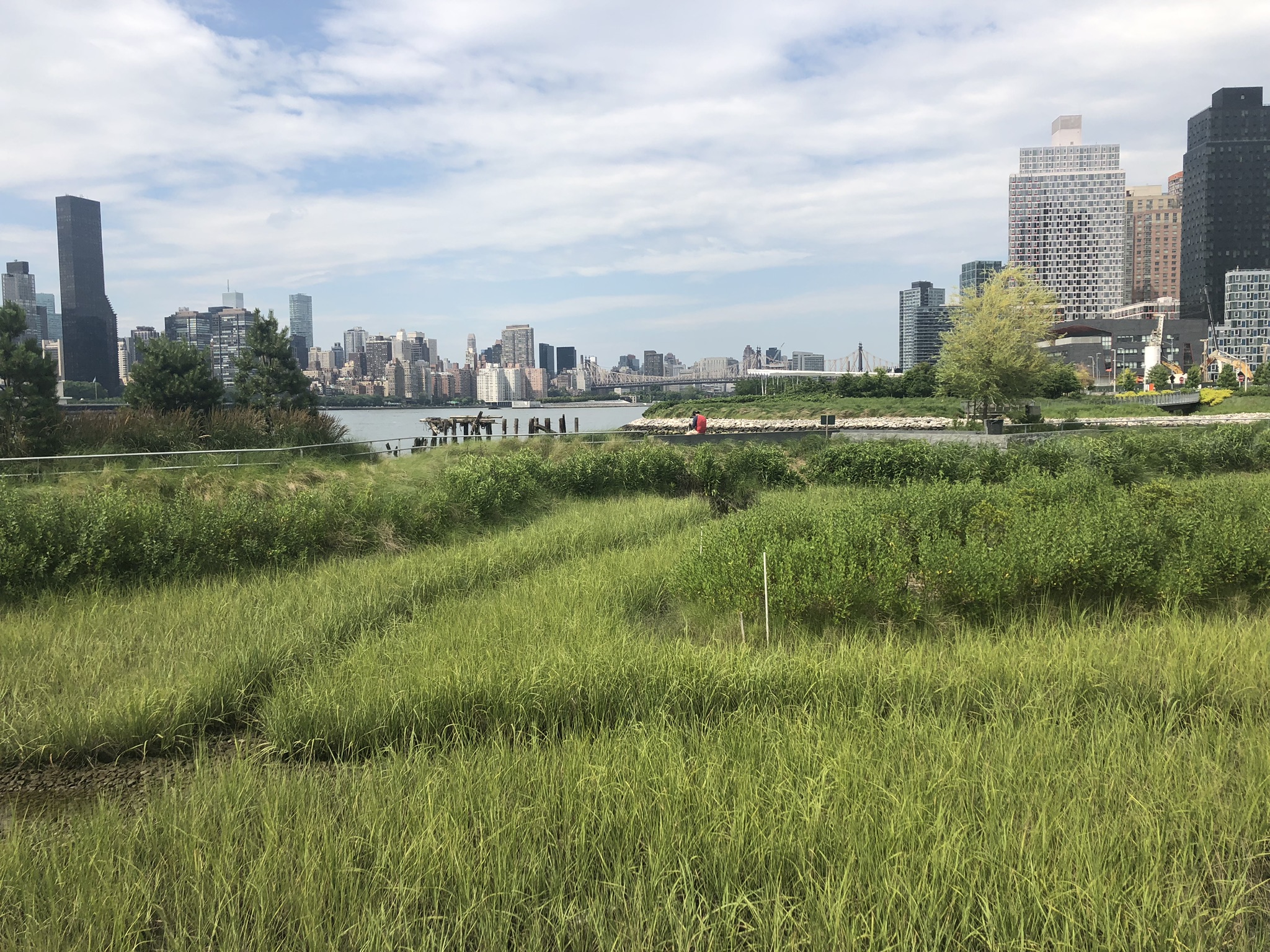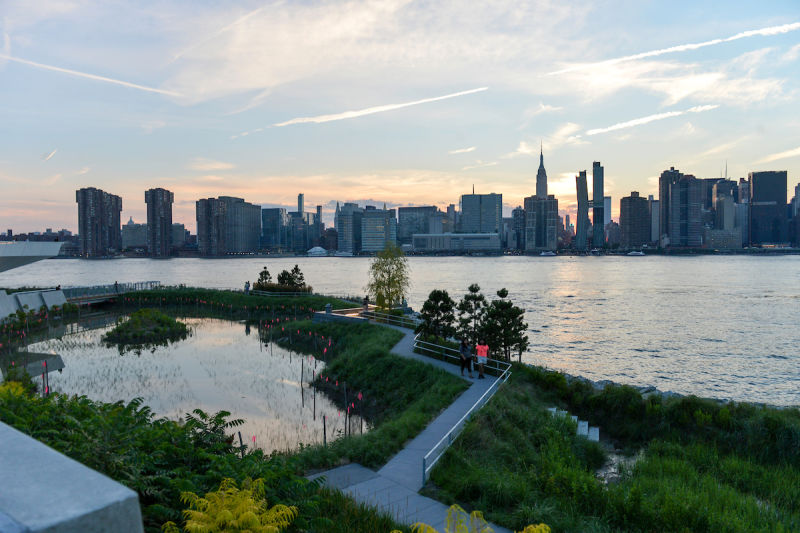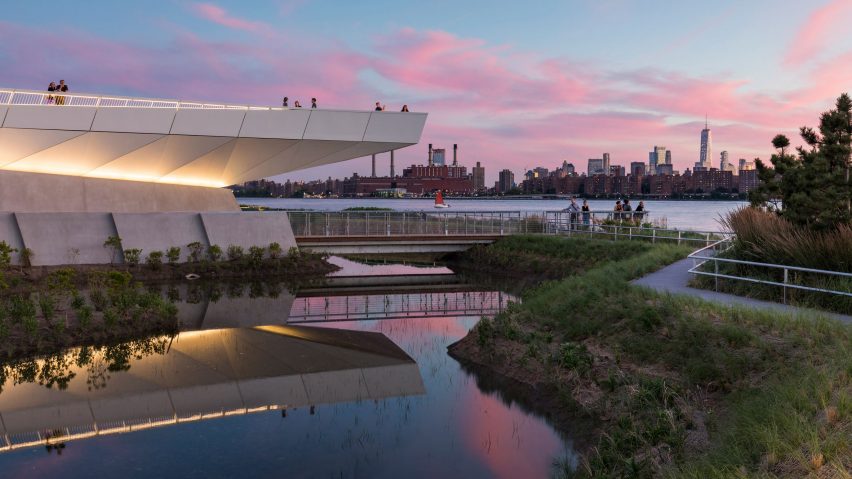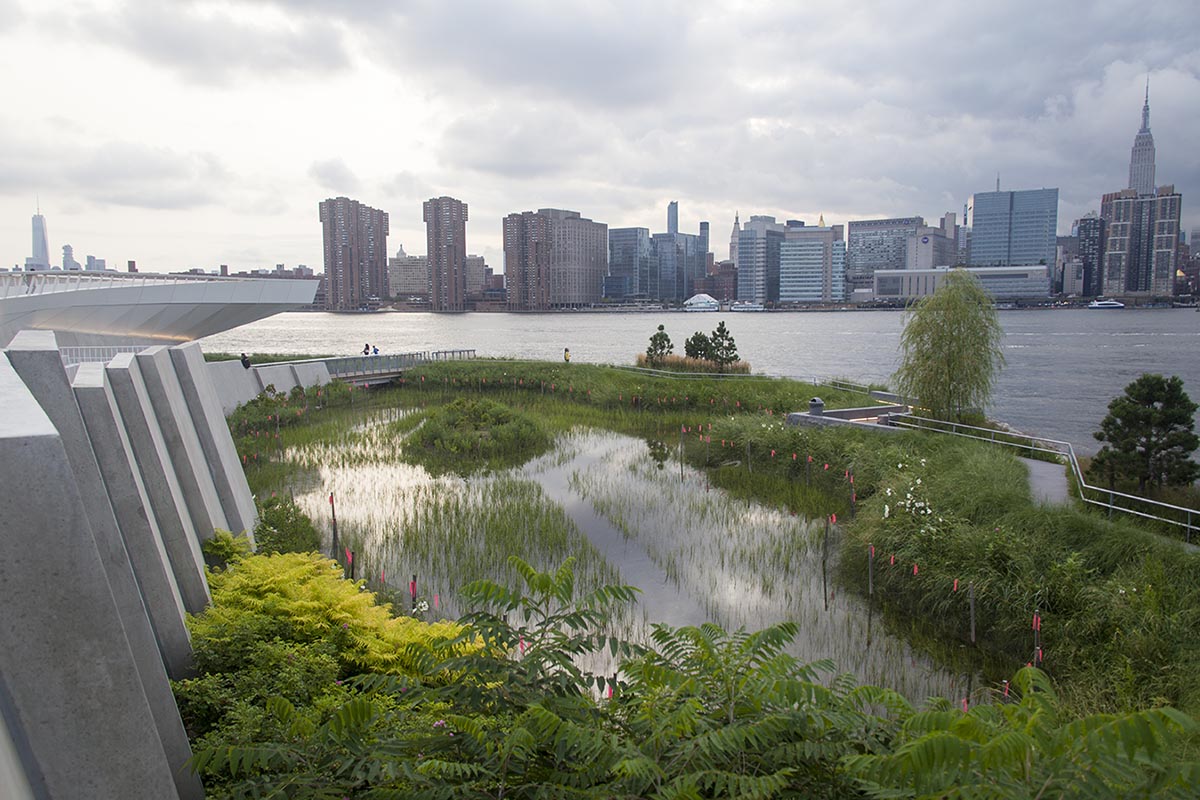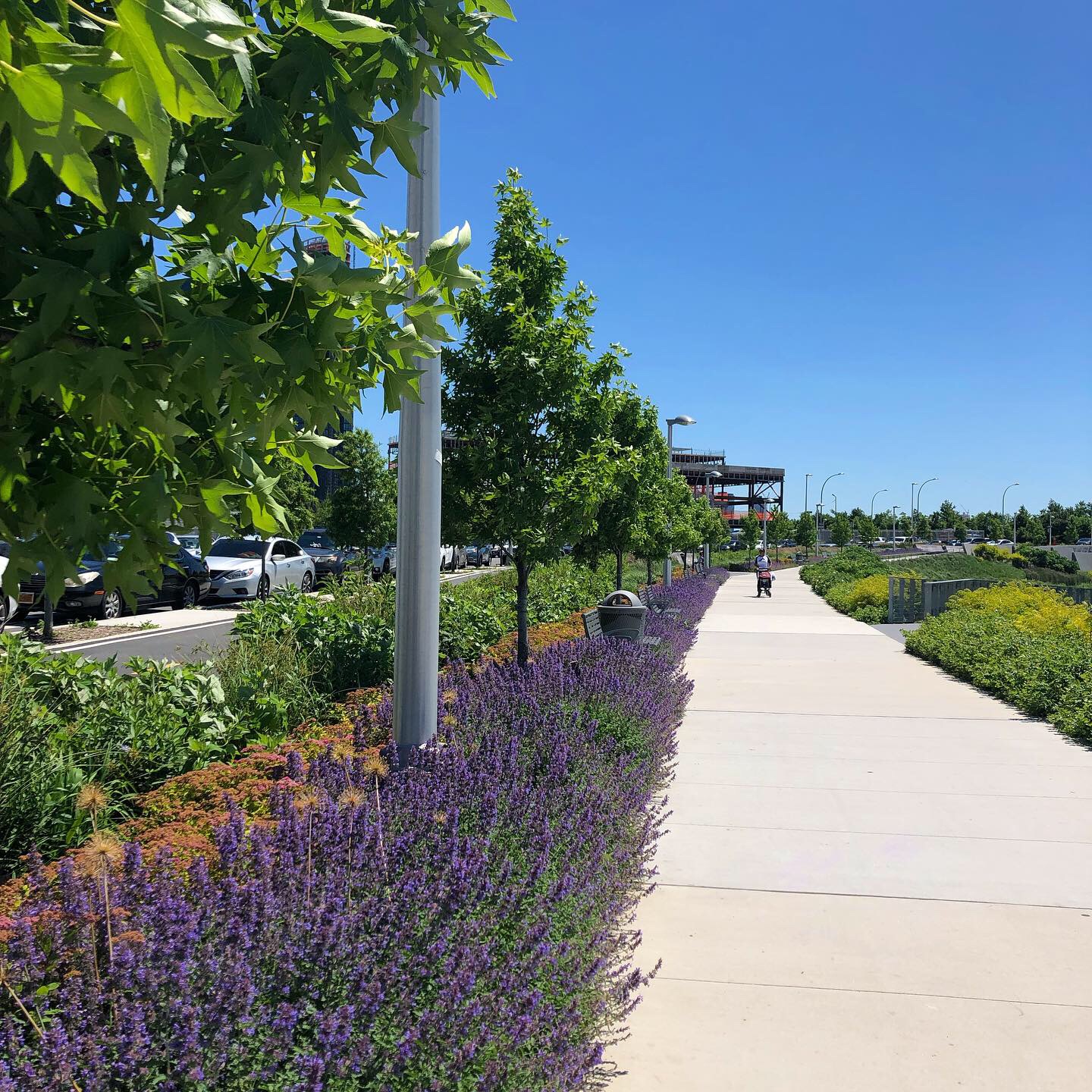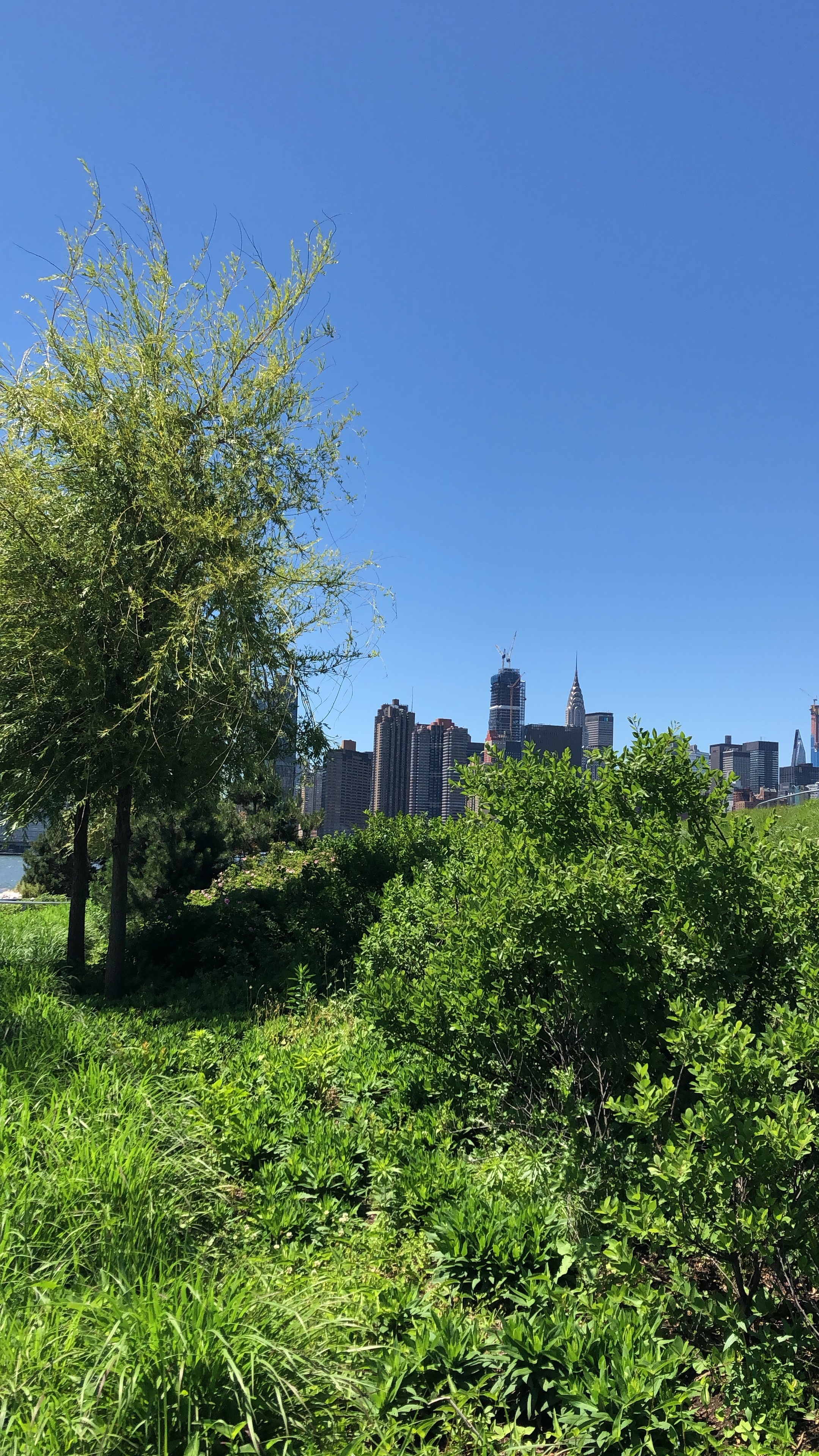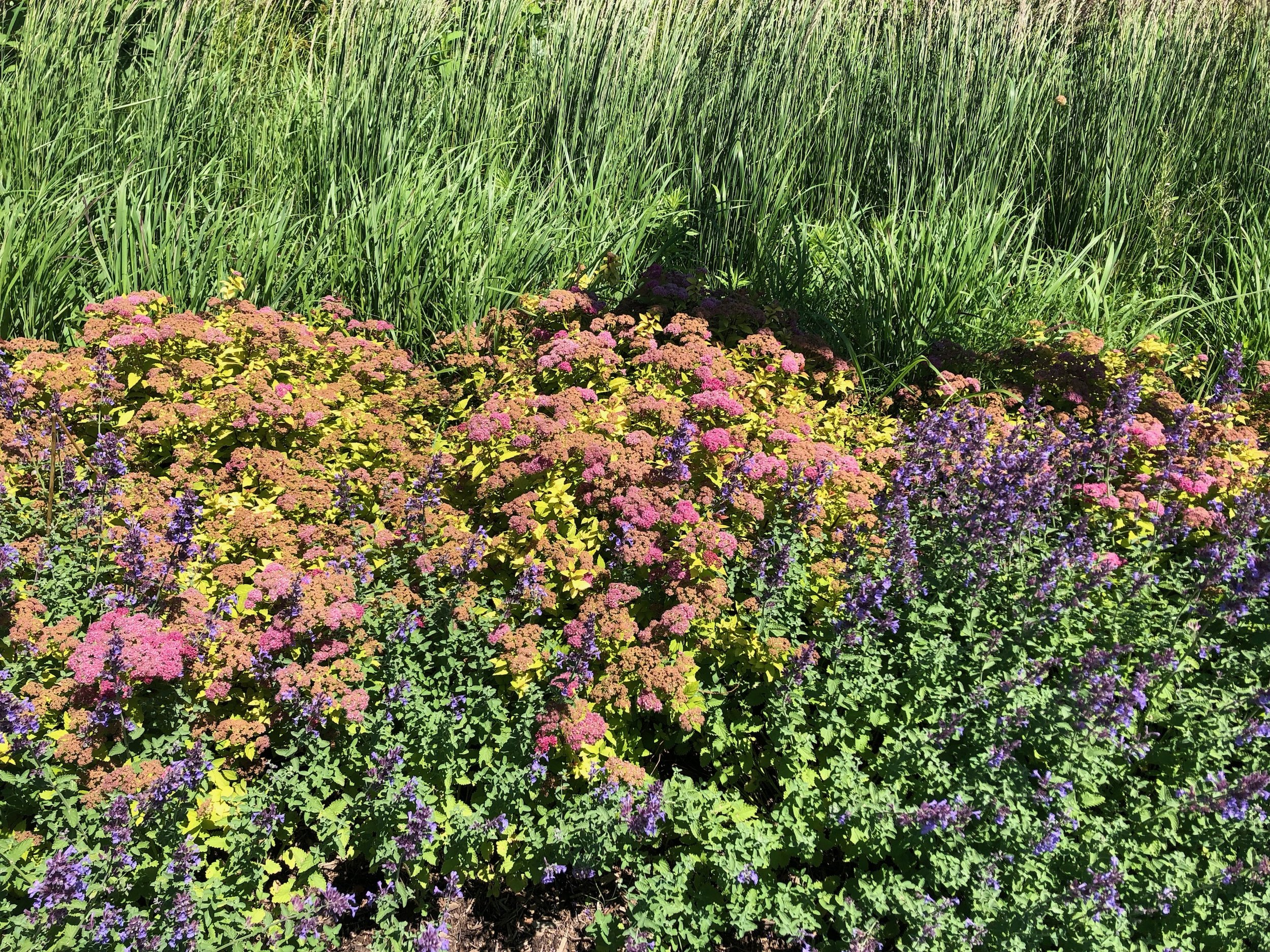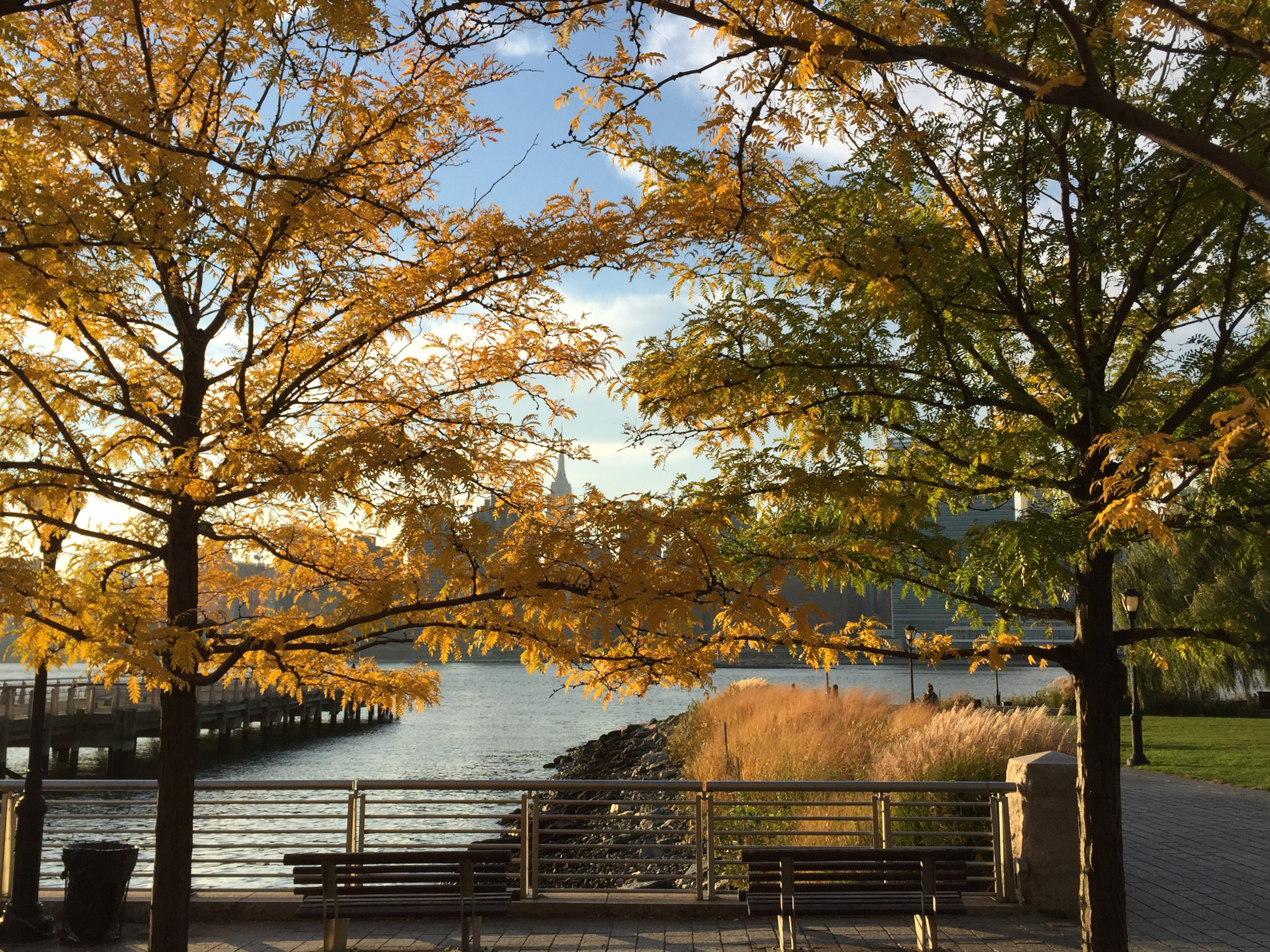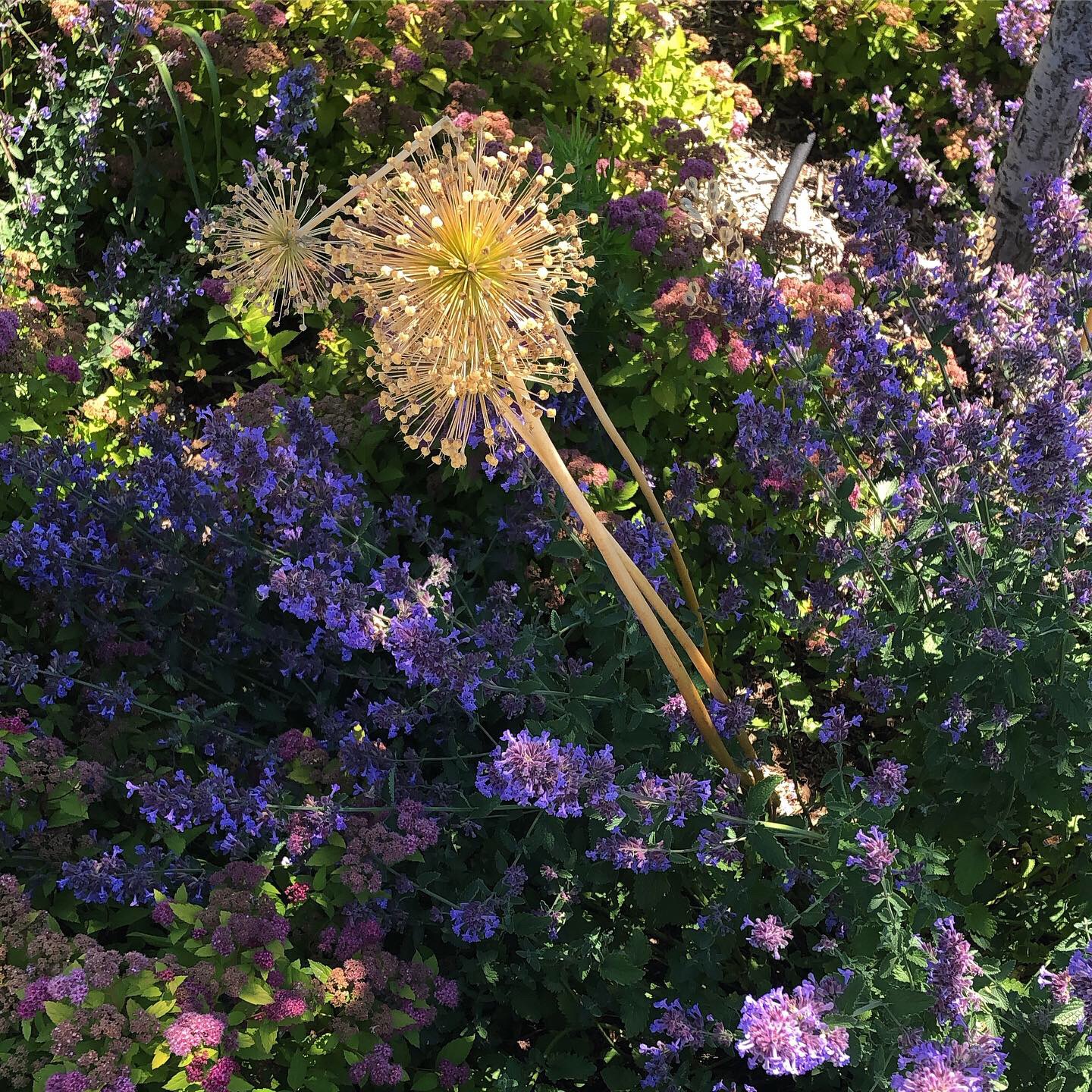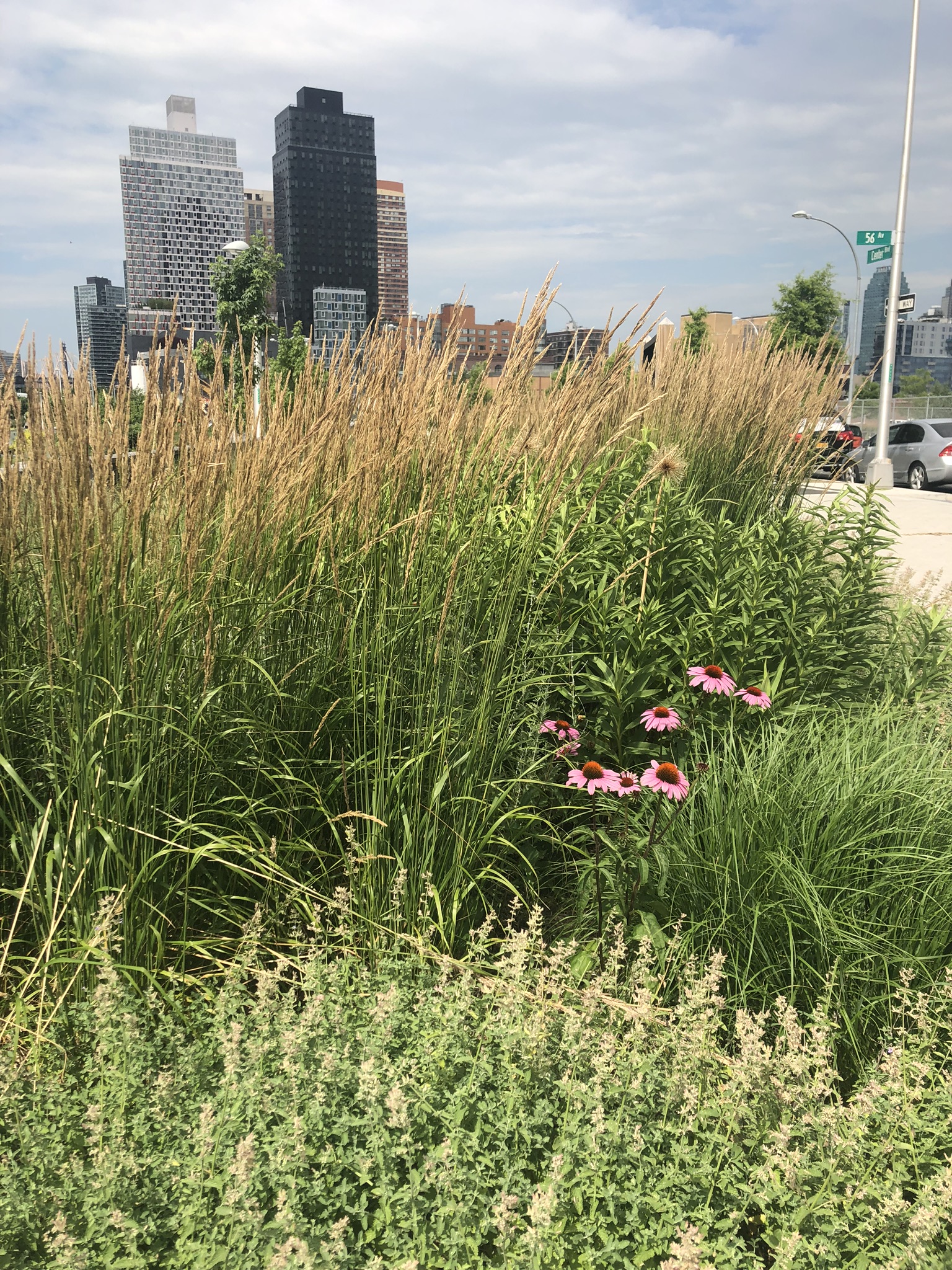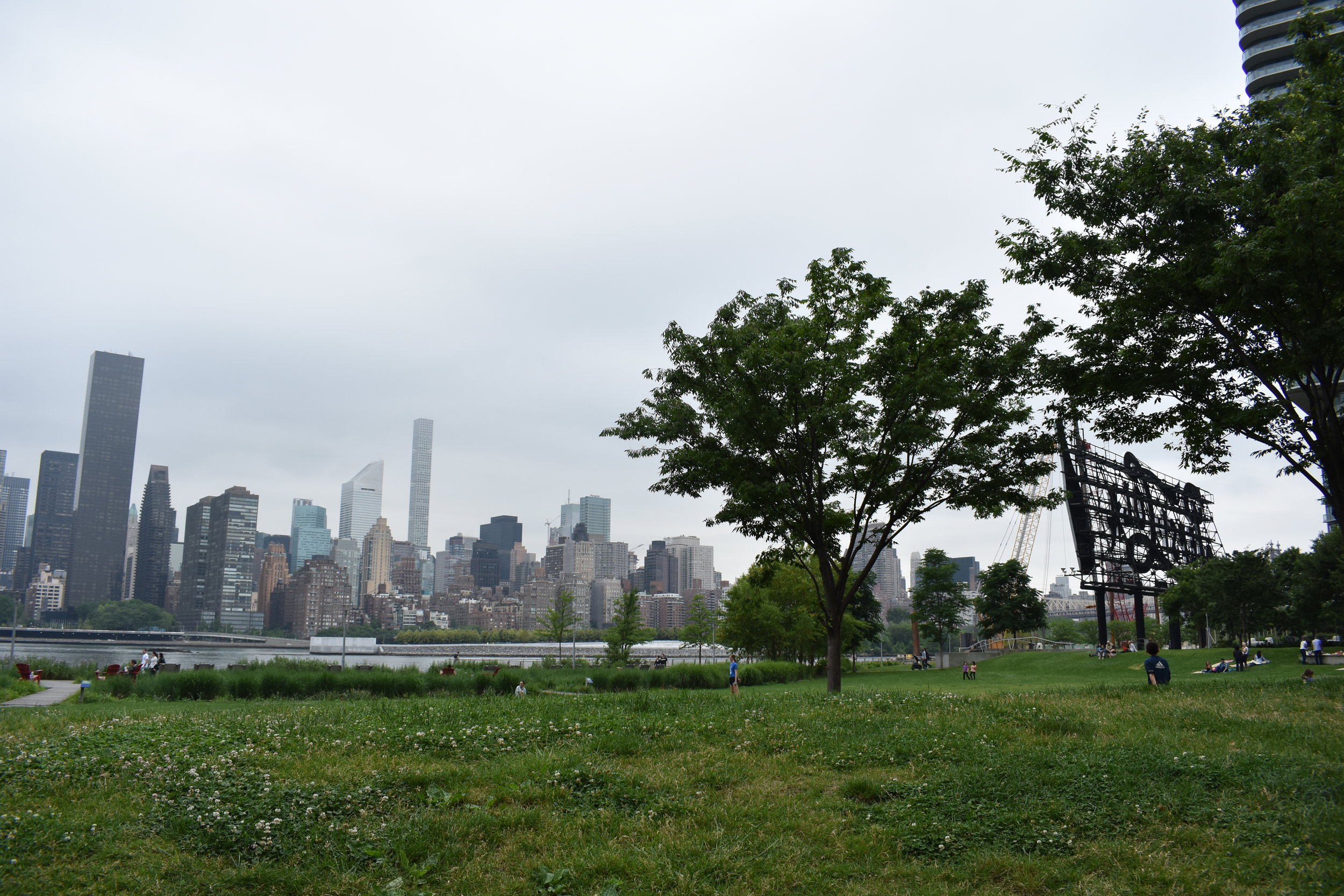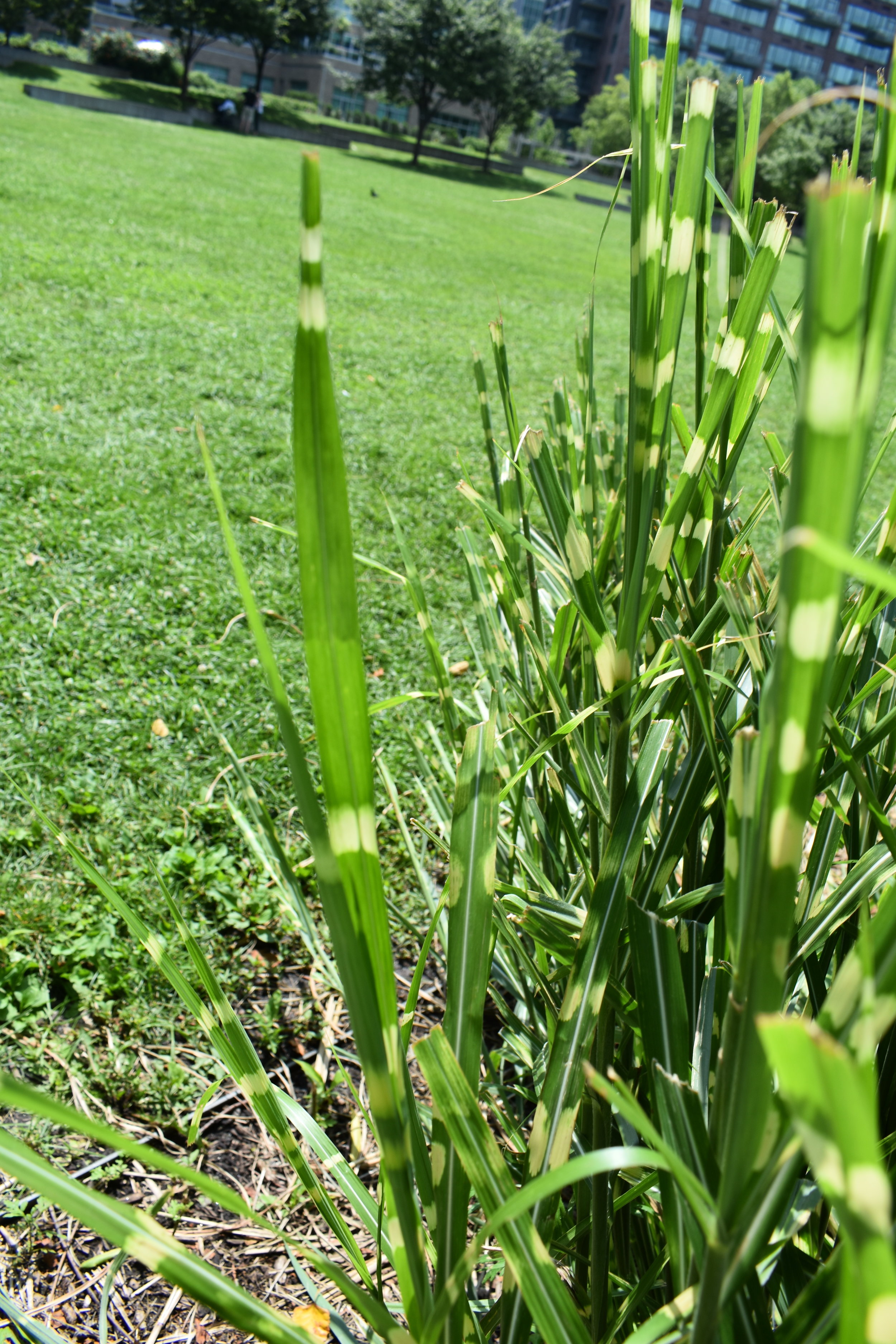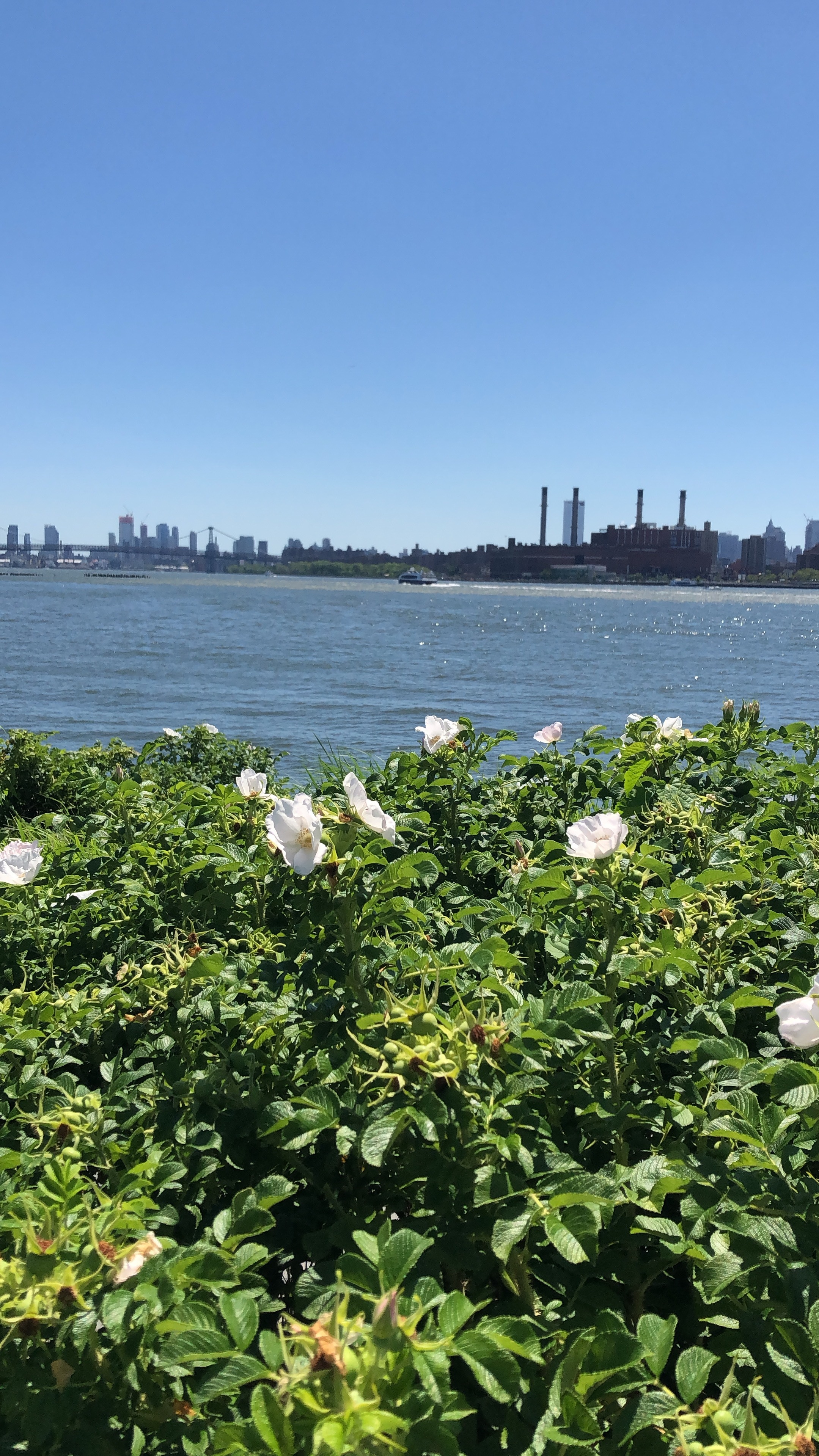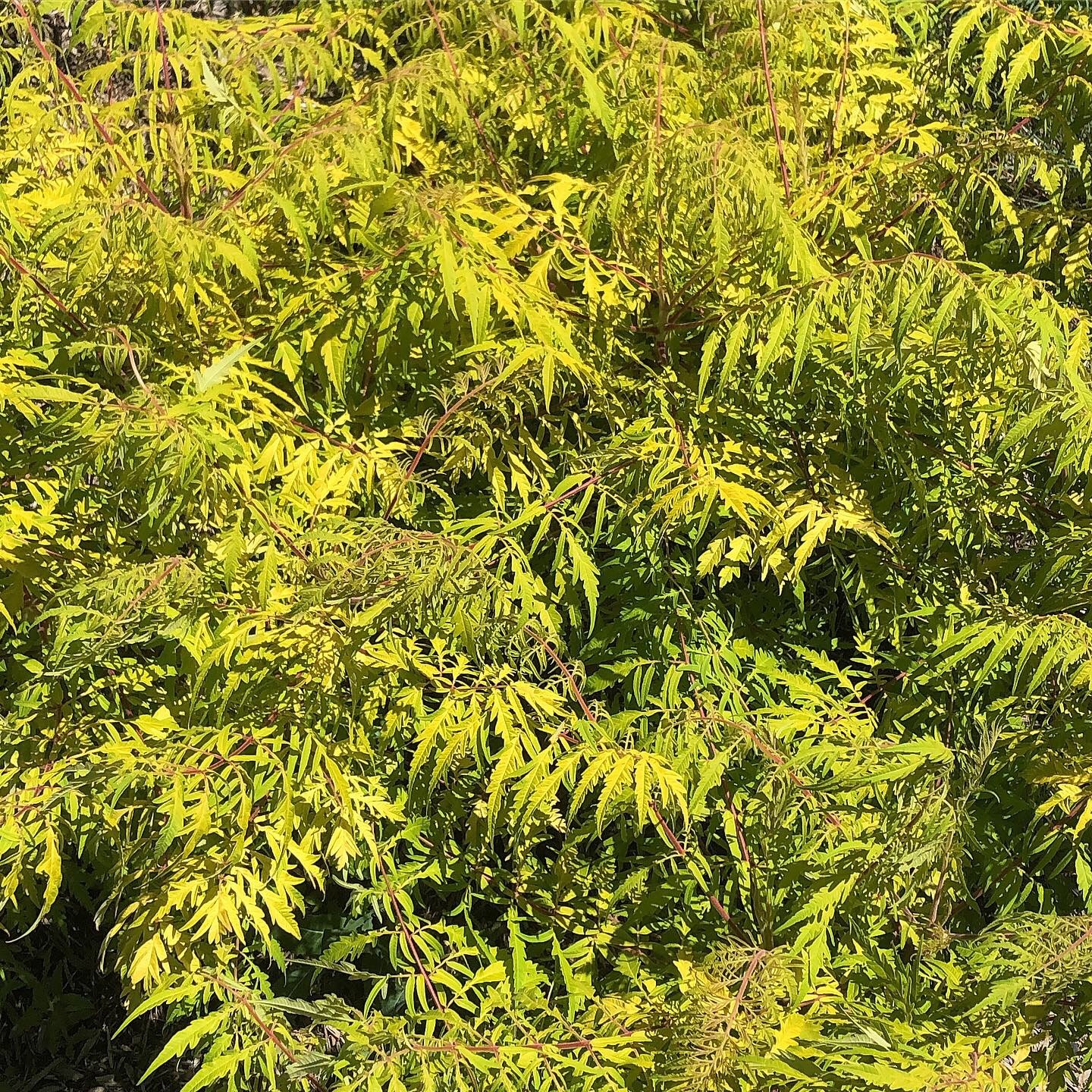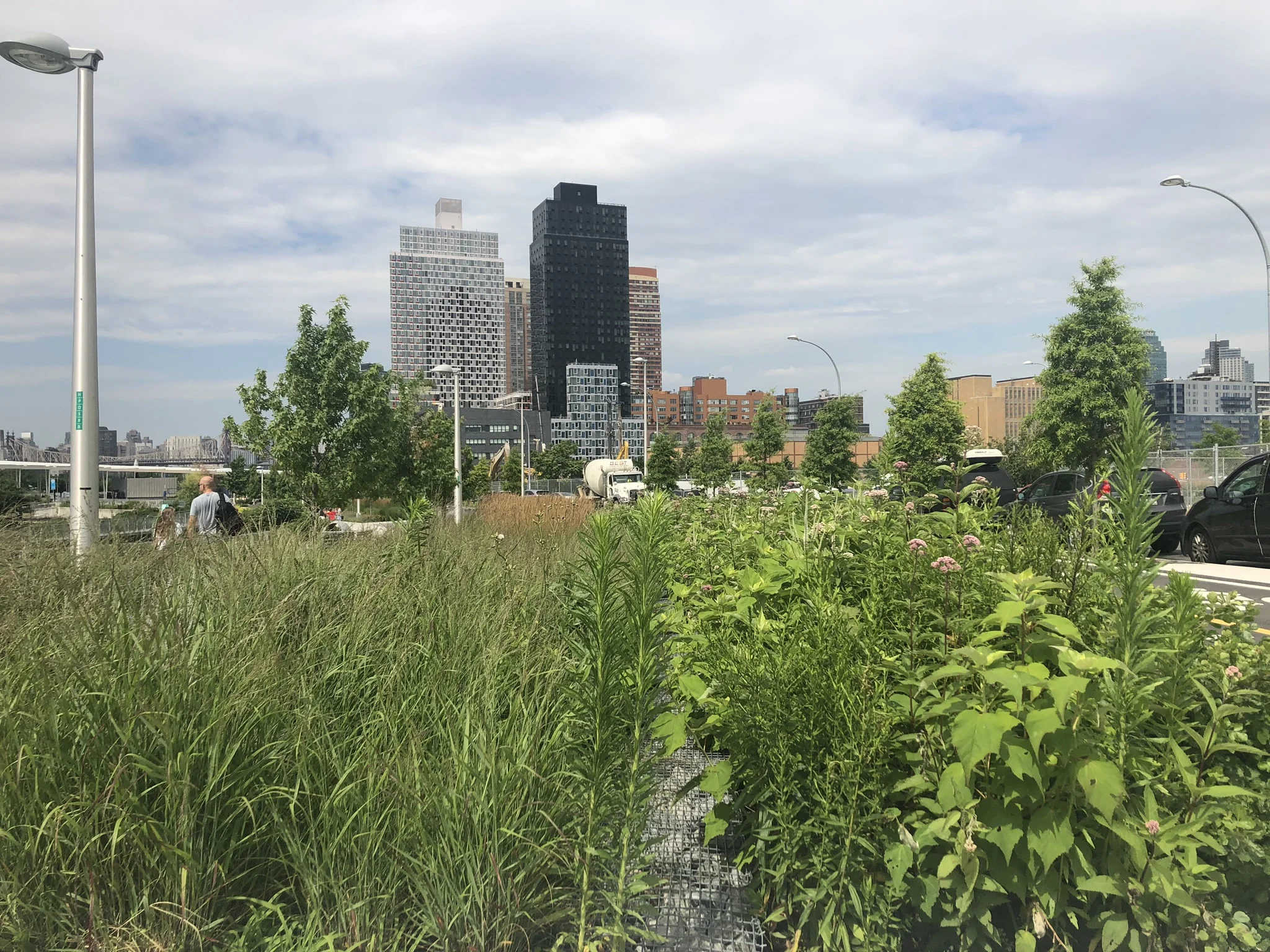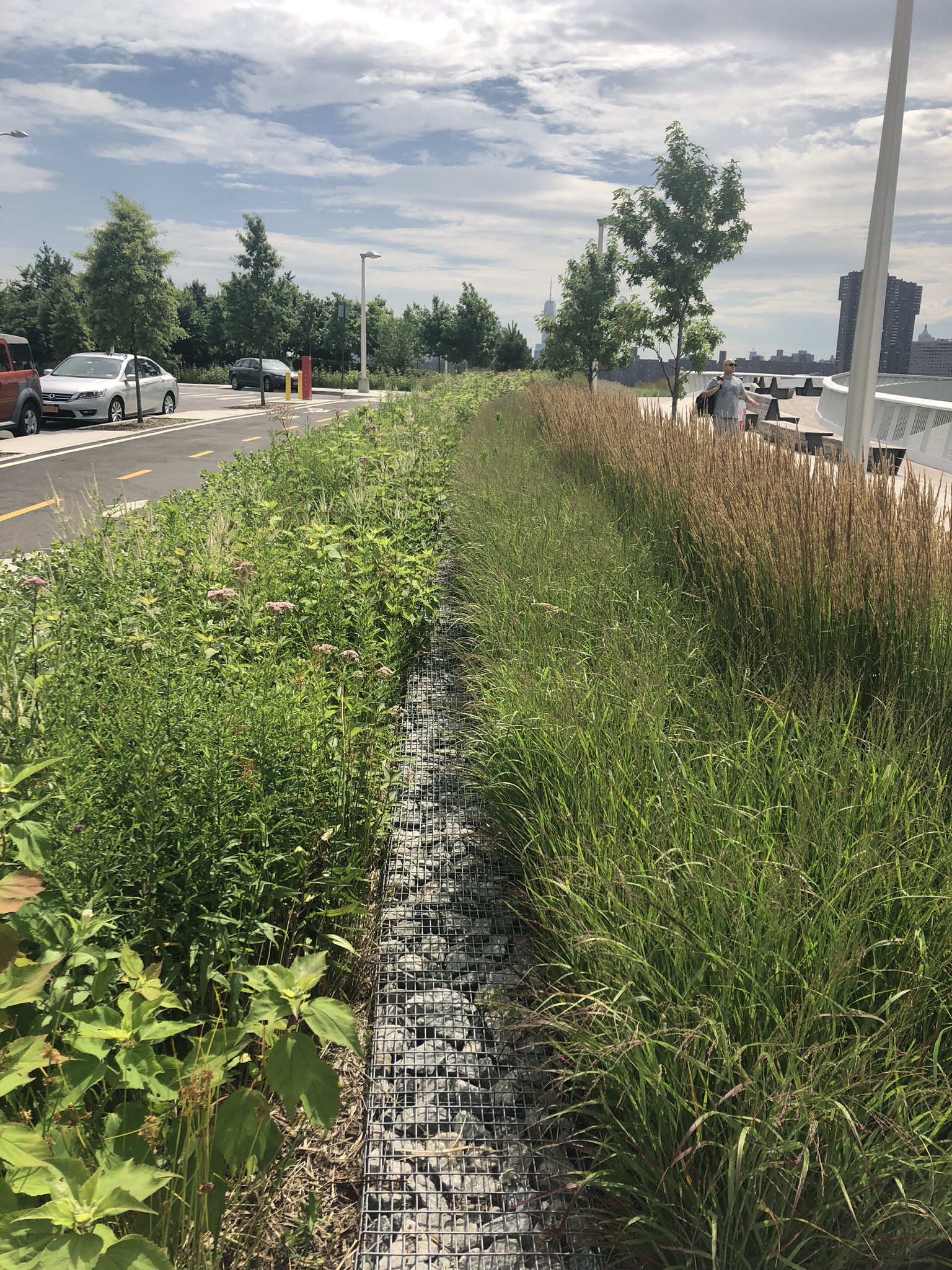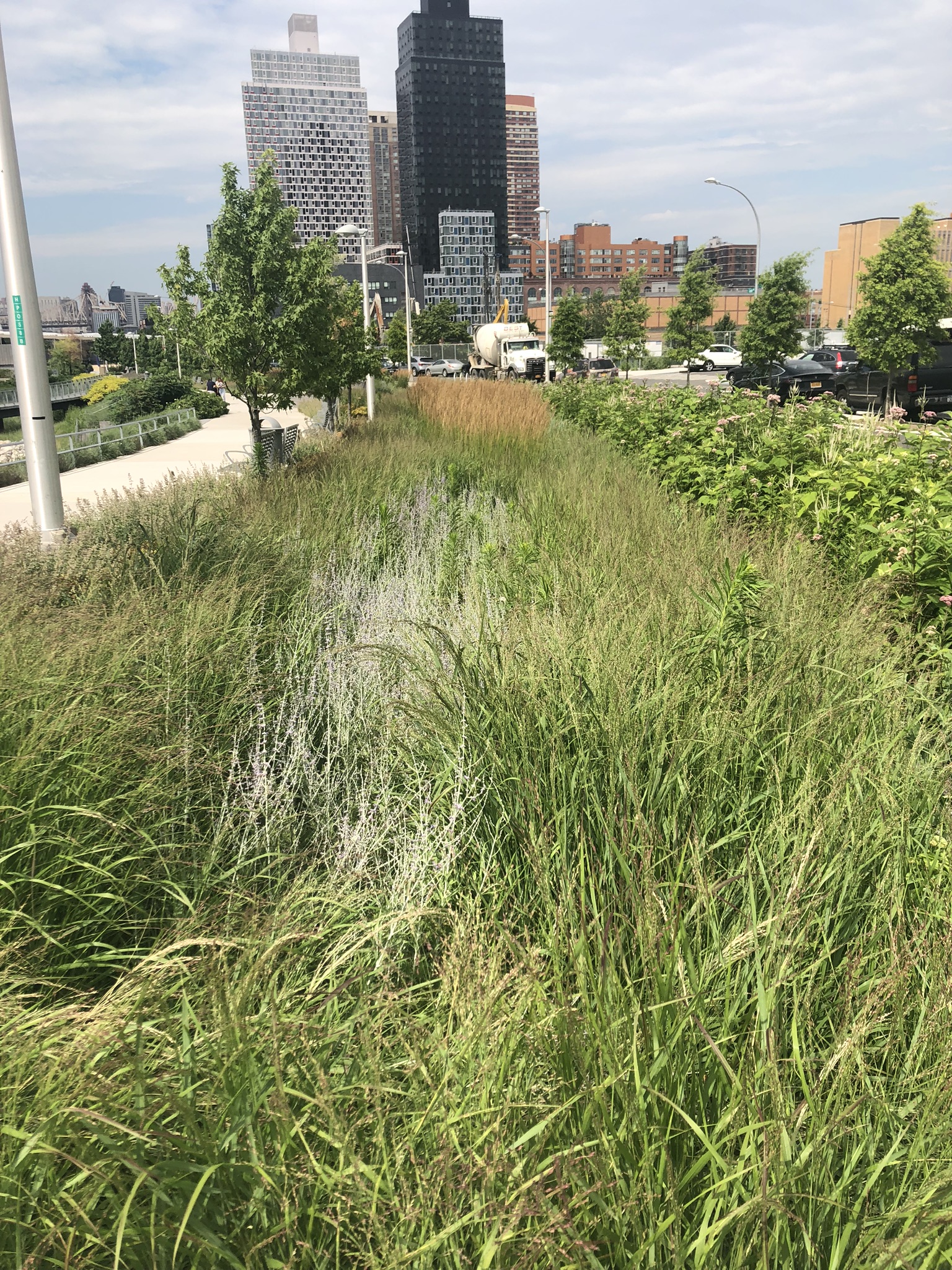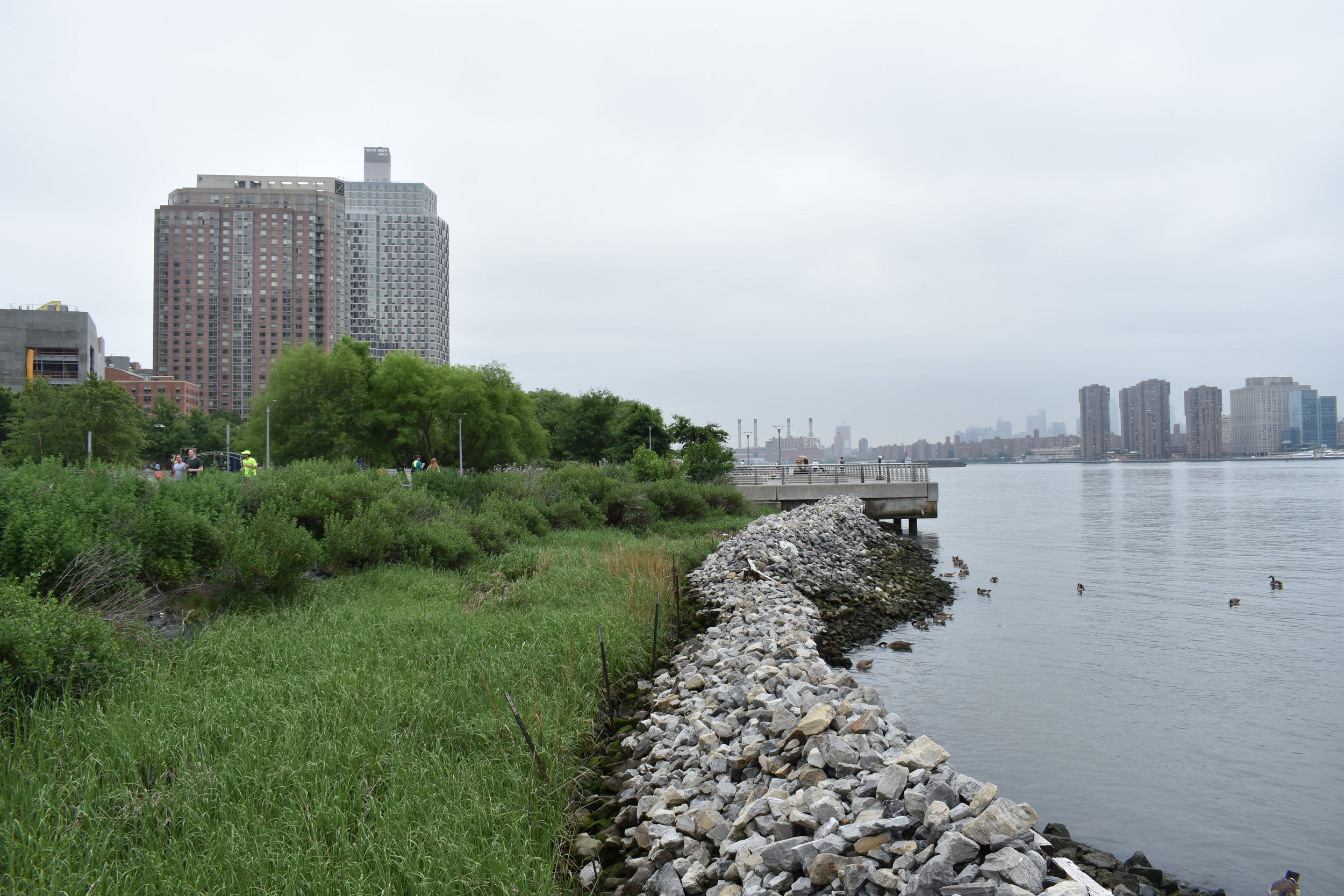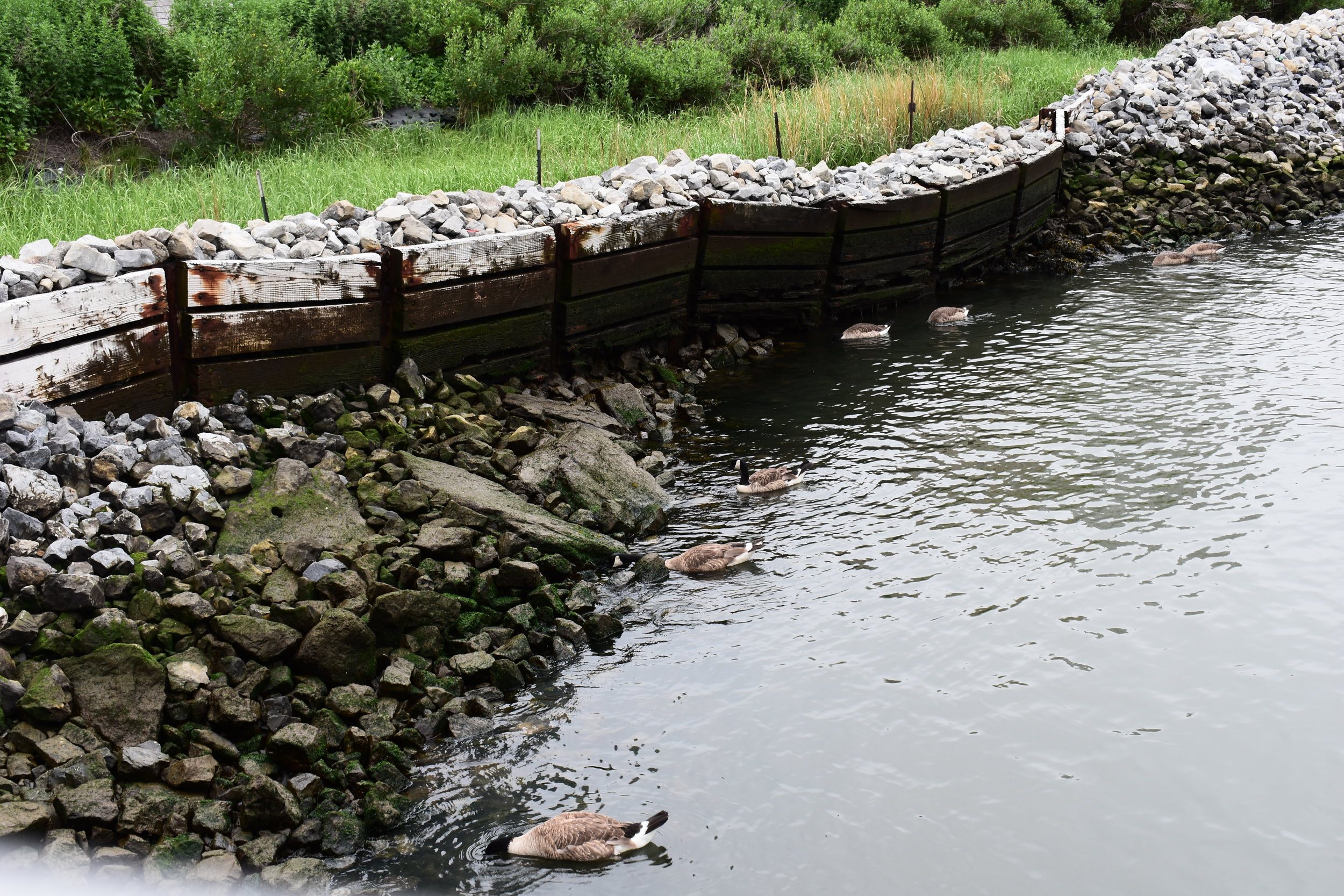11/7/20 - Hunters Point Parks Conservancy joined the Hunters Point Library Environmental Center to speak about the past, present, and future of our parks. Check out the video here.
Hunter’s Point South Park and Gantry Plaza State Park are designed to promote the ecological well-being of the Long Island City waterfront. These parks play a role in our community beyond being recreational spaces. This guide serves to demonstrate the ecological significance of our parks to our community.
You can also virtually explore the resilient design features of Hunter’s Point South Park with this interactive map, created by HPPC & Newtown Creek Alliance or take a virtual tour of Gantry Plaza State Park here.
Tidal marshes
Tidal salt marshes form a grassy fringe near river mouths, bays, and along coastlines protected from the open ocean. Ocean tides fill the marsh with salty water and cause the water level to rise and fall twice a day. The marsh is deeper at high tide and shallower at low tide. Hunter’s Point South Park contains 1.5 acres of constructed tidal marsh which:
Provide habitat for many native species of flora and fauna, including migratory birds and keystone species such as ribbed mussels.
Shield land from storm surge and sea level rise
Prevent shoreline erosion
Absorb excess nutrients that would lower oxygen levels in the sea and harm wildlife
Native vegetation
Native vegetation includes all the plant species that occur naturally in a particular area and provide essential habitat for native insects and animals. These plants have evolved together over time to form communities that are well-suited to the particular combination of soil, temperature, nutrients, and rainfall of their region Much of the plantings on the waterfront are native vegetation, which:
Are less resource intensive, and therefore easier to maintain. They require less water usage and there is no need for synthetic fertilizers.
Are naturally resilient because they are adapted to local conditions and have evolved defenses to many diseases and insect pests.
Provide vital habitats for native birds and other species.
Conserve water and soil by reducing stormwater runoff and preventing soil erosion due to their extensive root systems.
Native species in the park include: Black gum (Nyssa sylvatica), pitch pine (Pinus rigida), willow oak (Quercus phellos), beach plum (Prunus maritima), shrub rose (Rosa blanca), purple coneflower (Echinacea purpurea), seaside goldenrod (Solidago sempervirens) and many more.
bioswales
A bioswale is a landscaping feature used to slow, collect, infiltrate, and filter stormwater. Hunter’s Point South Park is rimmed almost entirely with a bioswale which:
Captures stormwater runoff from local streets and sidewalks and filters out many heavy metals the water has picked up, helping divert them from local waterways
Replaces sewage drains with beautiful and easy to maintain wildlife habitats
Reduces flooding
Reduces standing water that attracts insects such as mosquitoes
Diverts stormwater from the city’s Combined Sewer System and thus reduces Combine Sewer Overflows (CSOs)
NYC has a Combined Sewer System which collects stormwater runoff, domestic sewage, and industrial wastewater in the same pipes. During rain or melting events, the sewer system’s capacity is often exceeded and the excess water is discharged directly into a nearby body of water. Find out more info here.
There are two locations in Hunter’s Point South Park and 5 in Gantry Plaza State Park where the sewage system releases wastewater into the East River, polluting the water.
Bioswales and other green infrastructure help mitigate this CSO issue by collecting and filtering stormwater and diverting it from the sewer system.
Rip-rap
Rip-rap is a permanent, erosion-resistant ground cover of large, loose, angular stone. Most of the shoreline of Hunter’s Point South Park and Gantry Plaza State Park is lined with rip-rap which:
Protects the park and neighborhood from water erosion
Absorbs and deflects the impact of storm surges and waves
Can improve water quality by preventing the settling of sediments, which helps the water near the shoreline remain clean and clear



